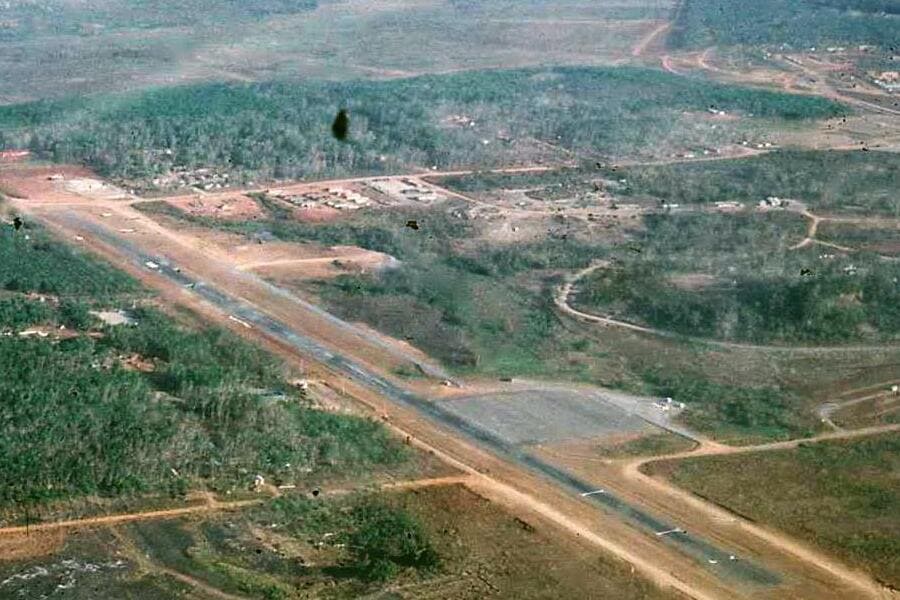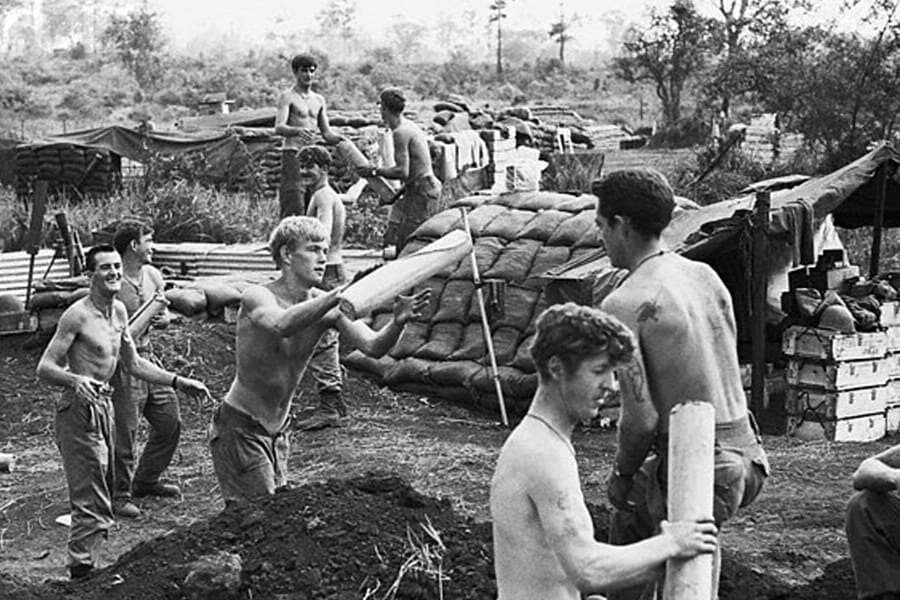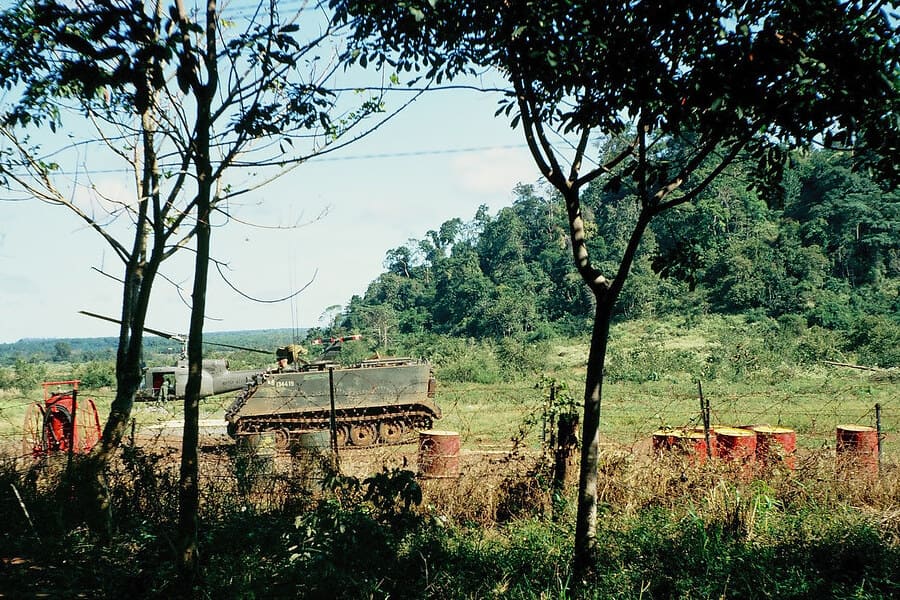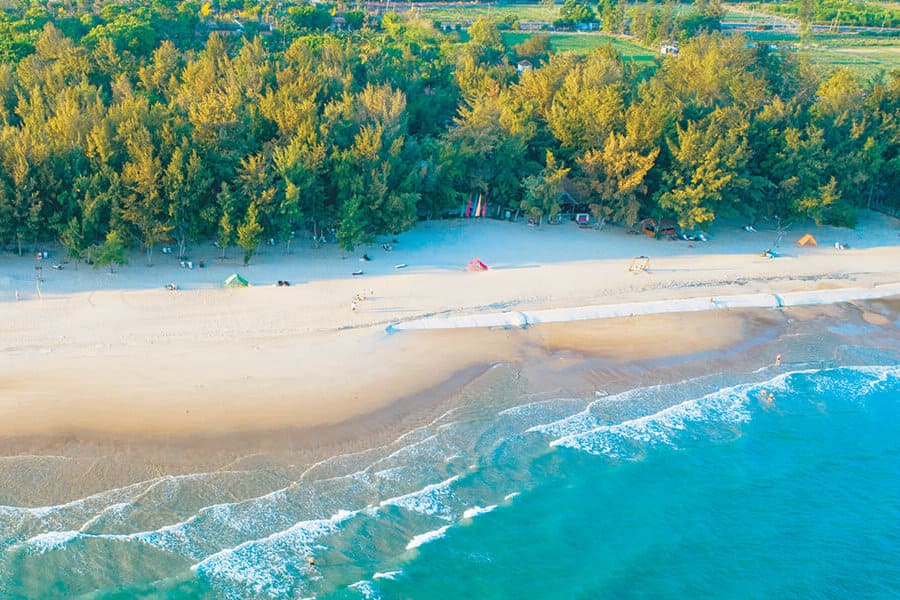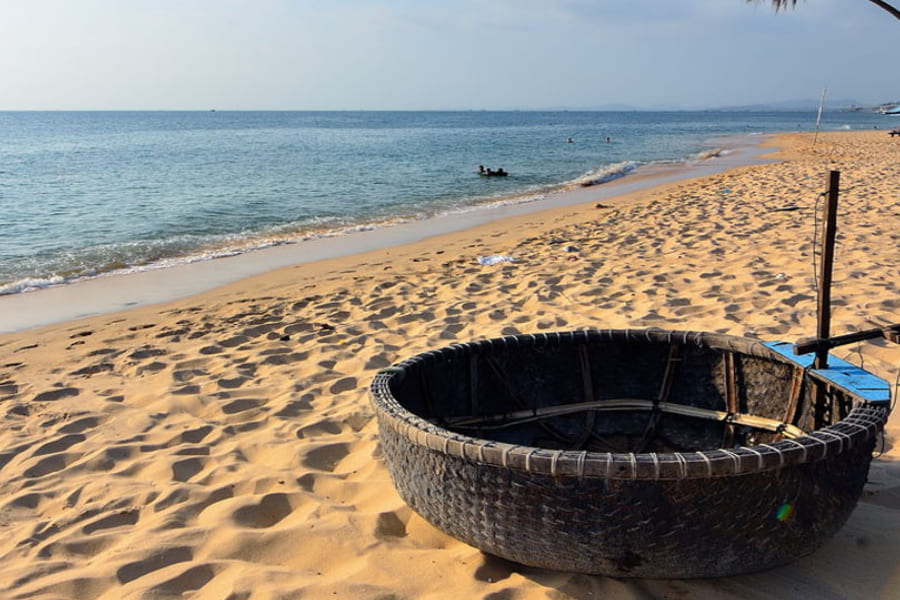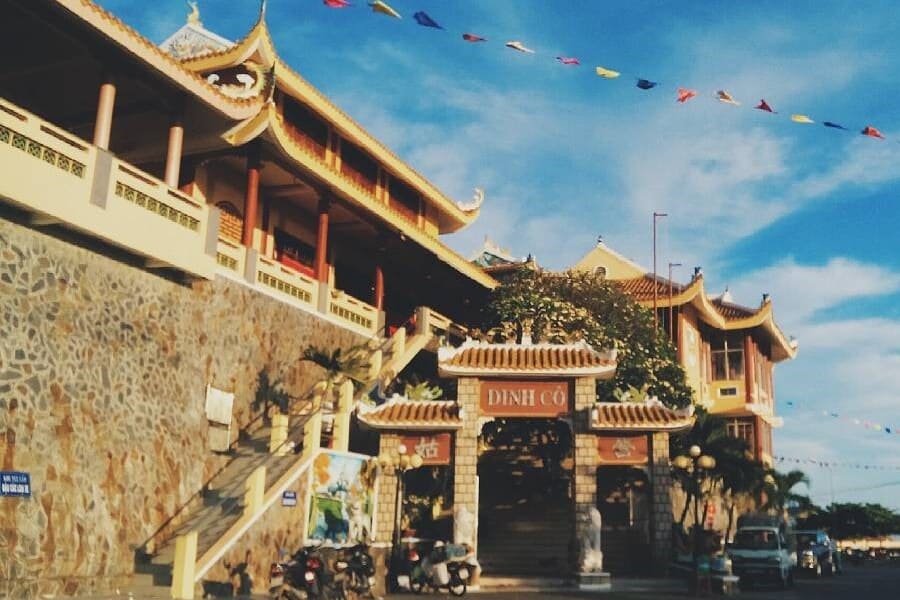Situated in the Ba Ria-Vung Tau Province of southern Vietnam, Nui Dat holds great historical significance in the Vietnam War. This ex-Australian military base served as the headquarters of the 1st Australian Task Force (1ATF) from 1966 to 1972. A visit to Nui Dat provides a special chance to discover a key location of the war, offering valuable perspectives into the experiences of Australian and New Zealand soldiers who were stationed there. When you look from afar, you will see that Nui Dat looks like a mountain.
Background Of The Past
For visitors to Vietnam seeking a deeper understanding of the nation’s turbulent history, a journey to the Nui Dat Task Force Base offers a profound and poignant experience. Nui Dat was a crucial base for the 1st Australian Task Force during the Vietnam War, playing a significant role in the operations against the Viet Cong in Phuoc Tuy Province. The base, established in 1966, served as a hub for thousands of Australian and New Zealand soldiers who were stationed there. It featured essential facilities including barracks for accommodation, a hospital for medical support, and an airstrip for logistical purposes.
One of the most significant events in the history of Nui Dat was the Battle of Long Tan, which occurred in close proximity to the base. This battle, involving intense fighting and significant casualties, became one of the most well-known engagements involving Australian forces during the war.
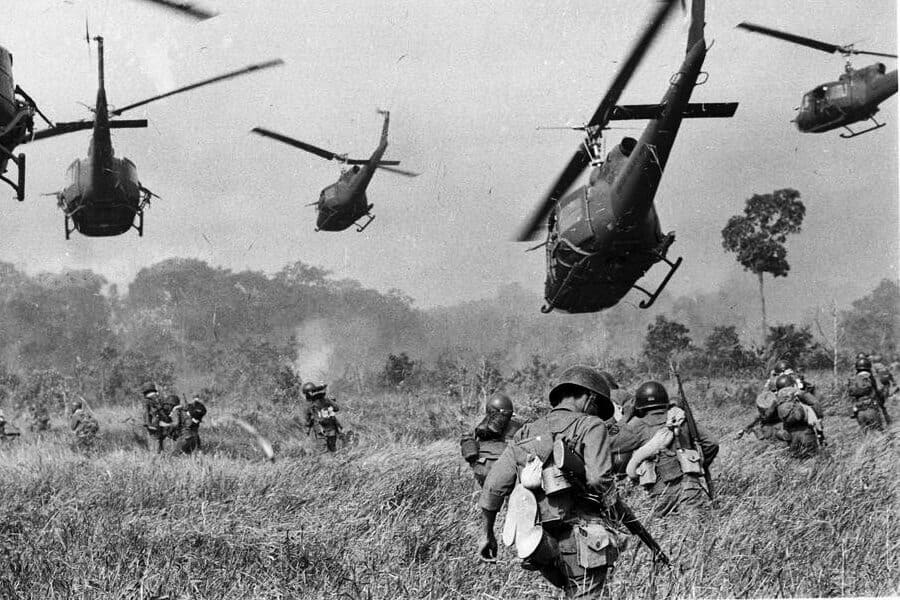
As you wander through the base, the stories of the brave men who fought and sacrificed here come alive. Imagine the intensity of the patrols and reconnaissance missions launched from this very location, the daring special forces operations that inflicted significant damage on the enemy, and the constant vigilance required to defend this remote outpost against relentless attacks. The Nui Dat base serves as a poignant reminder of the grit, determination, and resilience that defined the Australian military experience in the Vietnam War.
Following the end of the Vietnam War, the base was eventually abandoned in 1972. Today, while little physical evidence of the original structures remains, the site continues to hold great historical significance as a reminder of the sacrifices and contributions made by Australian and New Zealand forces during the conflict.
How To Get To Nui Dat
To get there, from Tan An town (now Tan An City – Long An) there is the Post Office intersection, turn right along Provincial Road 49 about 65 km to Moc Hoa town, meet Bien Phong intersection, turn right. Go left about 500 meters to get there. If you have never been to the border region of Moc Hoa, few people can imagine that this poor land has such a beautiful tourist area (unfortunately, the tourism industry has not invested properly). Even more interesting after a long journey, when tourists are tired, when they come here they can enjoy the fresh, cool atmosphere. Climbing to the top of the mountain, the wind blew on my face, the feeling was endless and indescribable.
Structural And Spatial Overview
Nui Dat is located approximately 8 kilometers northeast of the provincial capital, Ba Ria, and about 50 kilometers southeast of Saigon (now Ho Chi Minh City). The base was strategically positioned between the villages of Hoa Long and Long Tan.
From a distance, Nui Dat looks like a giant rockery floating in the middle of a clear, calm, blue lake, quite beautiful and poetic. Connecting Nui Dat with the shore is a soft, curved, stylized cement bridge.
Strategically located near Ba Ria and surrounded by rubber plantations and dense jungle, the base featured a defensive perimeter with barbed wire and bunkers, living quarters, a field hospital, logistics depots, maintenance workshops, and an airstrip for transport and medical evacuation. The base’s internal road network and sector division optimized operational efficiency, while artillery emplacements, helicopter landing zones, and fire support bases enhanced defense and support capabilities. Notably, Nui Dat played a critical role in the Battle of Long Tan, underscoring its strategic importance in the region.
Best Time To Visit 1st Australian Task Force
The best time to visit Nui Dat Task Force Base and its surroundings in Ba Ria-Vung Tau Province, Vietnam, is during the dry season from November to April. This period offers cooler temperatures, lower humidity, and minimal rainfall, creating ideal conditions for exploring outdoor sites like Nui Dat. March to April and November are particularly recommended as they are just before or after the peak tourist season, providing a balance of good weather and fewer crowds. These months also allow for comfortable visits to nearby attractions such as the Long Tan Cross Memorial, enriching your understanding of Australia’s military history in Vietnam.
What To See
While much of the original base infrastructure has been overtaken by the surrounding landscape, there are several points of interest that visitors can explore:
SAS Hill
Located in Nui Dat, Vietnam, it served as a strategic lookout point for the Special Air Service (SAS) Regiment during the Vietnam War. The hill provided soldiers with a vantage point to monitor the surrounding area, offering a clear view of the former base and the surrounding countryside. Visitors have the opportunity to climb the hill and experience the same perspective that the soldiers had, gaining a deeper understanding of the strategic importance of this elevated position.
Luscombe Airstrip
Also situated in Nui Dat, was named after an Australian soldier and served as the main airstrip for the base. Although it is no longer in use, the remnants of the airstrip still exist, providing a tangible sense of the scale of operations that took place at Nui Dat during the war. Walking along the airstrip, visitors can envision the aircraft that once landed and took off from there, recognizing the vital role it played in maintaining a connection to the outside world for the soldiers stationed at the base.
The Long Tan Cross Memorial
Located a short drive from Nui Dat, is a significant site that commemorates the Battle of Long Tan, a pivotal engagement during the Vietnam War. The memorial serves as a solemn tribute to the Australian soldiers who fought and made the ultimate sacrifice in that battle. Visiting the memorial offers an opportunity for reflection and remembrance, allowing visitors to pay their respects and gain a deeper appreciation for the sacrifices made by those who served in the conflict.
Exploring Nearby Places
Near Nui Dat Task Force Base in Ba Ria-Vung Tau Province, Vietnam, there are several notable places and attractions that visitors may find interesting to explore:
Long Tan Cross Memorial
Located approximately 7 kilometers from Nui Dat, this memorial commemorates the Battle of Long Tan, a significant engagement during the Vietnam War involving Australian and Viet Cong forces.
A coastal city about 20 kilometers southwest of Nui Dat, Vung Tau offers beautiful beaches, colonial-era architecture, and attractions like the Statue of Jesus (Christ of Vung Tau) and the Vung Tau Lighthouse.
Ho Tram Beach
A serene beach destination about 40 kilometers northeast of Nui Dat, known for its pristine sands and tranquil atmosphere, ideal for relaxation and water sports.
Binh Chau Hot Springs
Located approximately 60 kilometers north of Nui Dat, Binh Chau Hot Springs is a natural thermal spring area known for its therapeutic mineral waters and lush surroundings.
Ho Coc Beach
Another nearby beach destination, Ho Coc is known for its quiet ambiance and scenic beauty, offering a peaceful retreat from the bustling city life.
Dinh Co Temple
Situated in Ba Ria City, about 30 kilometers from Nui Dat, this historic temple is dedicated to Thuy Long Thanh Mau (the Goddess of the Sea) and offers cultural insights into local religious practices.
Visitor Experience And Tips
When visiting Nui Dat Task Force Base, enhancing your experience involves several key strategies. Engage in guided tours to gain a comprehensive understanding of the base’s history and its pivotal role during the Vietnam War. These tours, led by knowledgeable guides, offer detailed insights into military operations and the personal experiences of soldiers stationed there, enriching your Vung Tau shore excursions with contextual depth.
Participate in educational programs that delve deeper into the complexities of the Vietnam War and the specific contributions of Nui Dat. Led by historians and veterans, these programs provide firsthand accounts and perspectives, offering a nuanced understanding of the base’s strategic importance and its impact.
Maintain respectful conduct throughout your visit, acknowledging the site’s historical significance and honoring the sacrifices of those who served. Follow guidelines provided by tour operators to preserve sensitive areas and artifacts, ensuring the integrity of the site and respecting the local community’s cultural sensitivities.
Capture the remnants of history through photography, but do so with sensitivity and reverence for the solemnity of the site. Photography can serve as a powerful means of documenting and reflecting upon the significance of Nui Dat Task Force Base in Australia’s military history.
By integrating these approaches, visitors can fully appreciate the significance of Nui Dat Task Force Base and its enduring legacy within the broader context of Australian military history.
Legacy And Preservation Efforts
Efforts are ongoing to preserve the historical significance of Nui Dat Task Force Base through memorials, interpretive displays, and educational initiatives. These initiatives aim to honor the sacrifices made by Australian and New Zealand forces and educate future generations about the realities of war and its impact on those involved.
Nui Dat Task Force Base holds great historical significance as a pivotal site during the Vietnam War. It served as the operational headquarters for Australian and New Zealand forces, playing a crucial role in various military operations. Today, visitors on Vietnam shore excursions can explore this historic site, gaining insights into the strategic importance of Nui Dat and the broader context of the conflict. The base stands as a poignant reminder of the sacrifices made and the enduring impact of the war on both the soldiers and the Vietnamese landscape.

